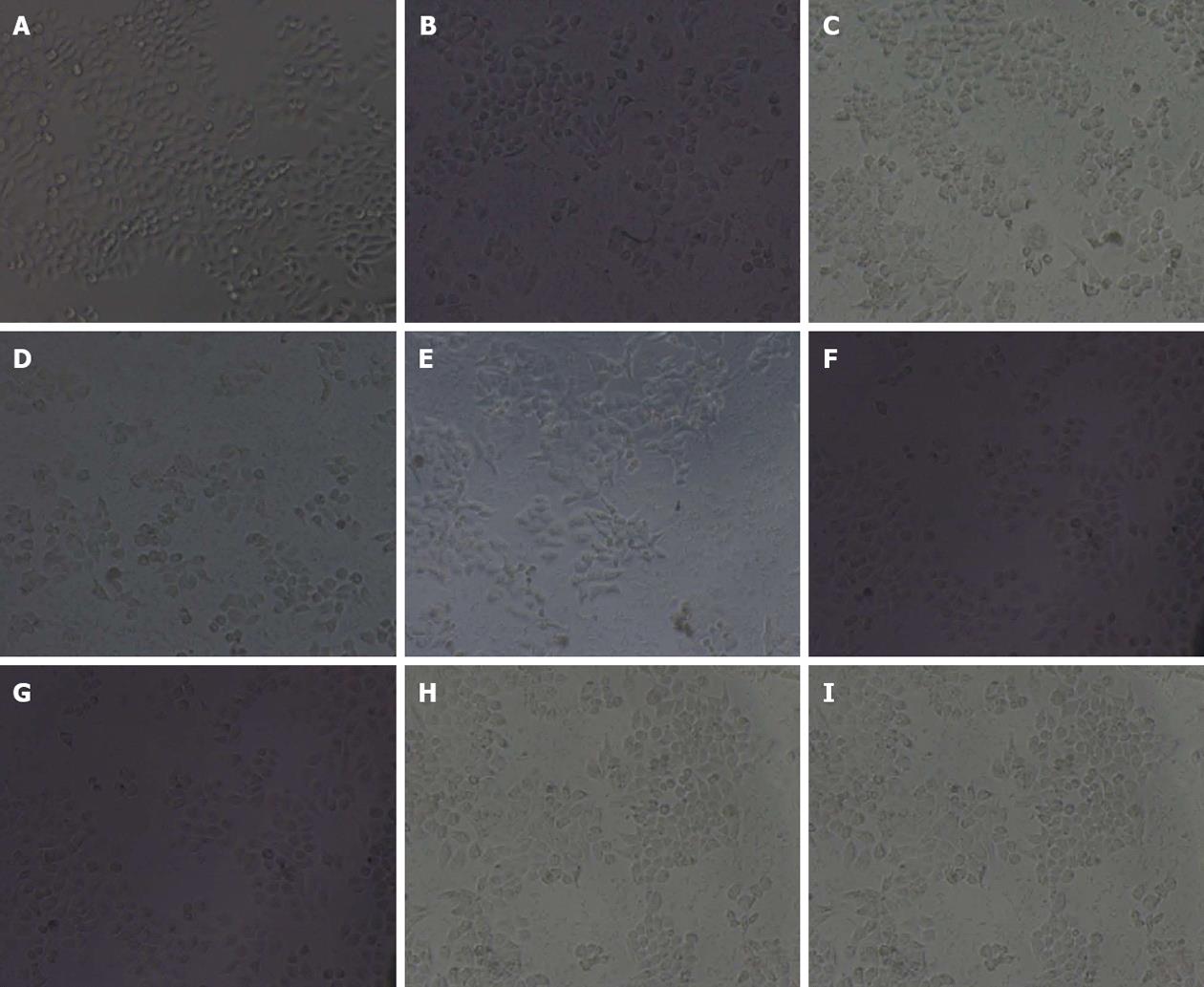Copyright
©2013 Baishideng Publishing Group Co.
World J Gastroenterol. Aug 21, 2013; 19(31): 5085-5093
Published online Aug 21, 2013. doi: 10.3748/wjg.v19.i31.5085
Published online Aug 21, 2013. doi: 10.3748/wjg.v19.i31.5085
Figure 2 Gastric epithelium cell line cell morphology (× 200).
In bland group, gastric epithelium cell line (GES-1) cells were polygon-shaped or spindle-shape with pseudopodia and island-like growth. Cells gradually were adherent. With prolonged incubation time, the number and density of cells were increased with a few floating cells (A). In the GES-1 cells treated with Helicobacter pylori for 12 (B), 24 (C), 48 (D) and 72 (E), cells became round; adherent cells were decreased and floating cells were increased; fragments occurred around cells; cell junction was reduced; the boundaries between cell nucleus and cytoplasm were obscure, and nucleus-cytoplasm fusion was seen. In the GES-1 cells treated with radix curcumae-derived diterpenoid C (5, 10, 20 μg/mL), adherent cells increased and cell morphology gradually recovered at 24 h (F-I, respectively). Amoxicillin had no marked effects on cell morphology.
-
Citation: Huang X, Lv B, Zhang S, Dai Q, Chen BB, Meng LN. Effects of radix curcumae-derived diterpenoid C on
Helicobacter pylori -induced inflammation and nuclear factor kappa B signal pathways. World J Gastroenterol 2013; 19(31): 5085-5093 - URL: https://www.wjgnet.com/1007-9327/full/v19/i31/5085.htm
- DOI: https://dx.doi.org/10.3748/wjg.v19.i31.5085









